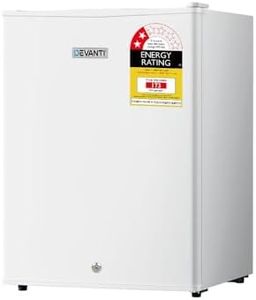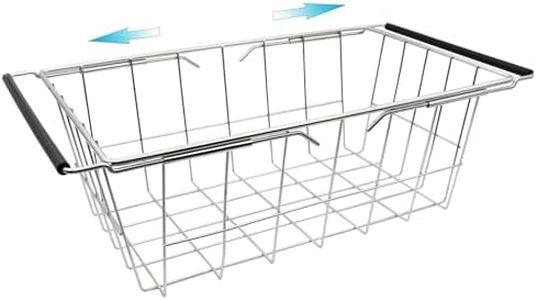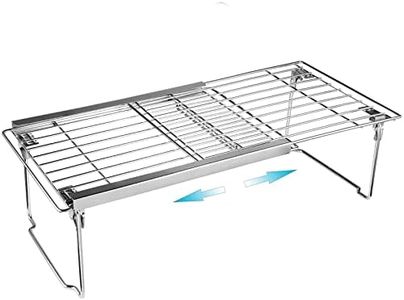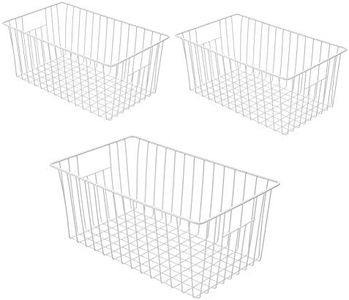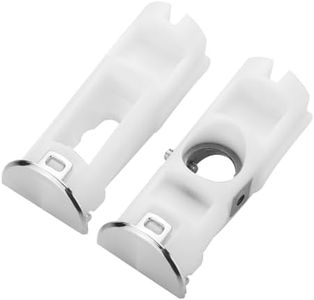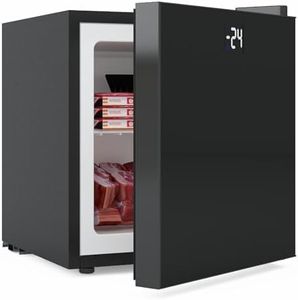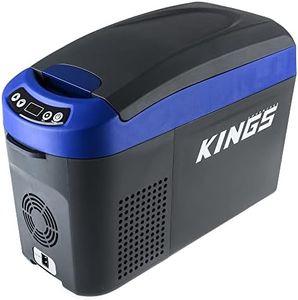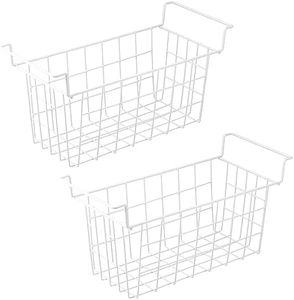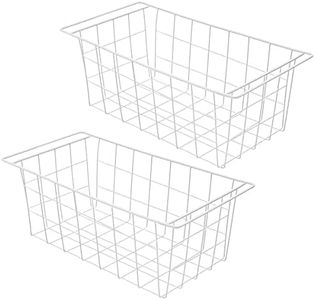We Use CookiesWe use cookies to enhance the security, performance,
functionality and for analytical and promotional activities. By continuing to browse this site you
are agreeing to our privacy policy
10 Best Deep Freezers
From leading brands and best sellers available on the web.Buying Guide for the Best Deep Freezers
Choosing a deep-freezer can make a big difference in how much food you can store and how conveniently you can access it. Whether you're preserving garden produce, stocking up on meats, or just want extra space beyond your kitchen fridge, picking the right deep-freezer means considering your household needs, storage space, and the type of foods you freeze most often. Start by thinking about where you'll place the freezer, how much you need to store, and how often you'll need to access different items. Knowing the basics of deep-freezers will help you make a decision that keeps your frozen food preserved, fresh, and easy to manage.Capacity (Storage Size)Capacity tells you how much food the freezer can hold, usually measured in cubic feet or liters. This is important because the right size lets you store everything you need without wasting energy on empty space. Small freezers under 7 cubic feet are great for singles or couples, or as a secondary freezer. Medium sizes, from 7 to 14 cubic feet, work for a family of four or so. Large freezers above 14 cubic feet are best for larger families, hunters, or anyone who freezes big quantities. Choosing the right capacity depends on how much you plan to store and the space you have at home—too big wastes energy and space, too small leaves you short on storage.
Type (Chest vs. Upright)Deep-freezers come mainly as chest or upright models. Chest freezers are the deep, box-like models you load from the top; they're usually more energy-efficient, keep cold better during power outages, and hold bulky items well, but can be harder to organize. Upright freezers have front-opening doors like refrigerators, making it easier to access and organize food in shelves and bins, but they may not retain cold as well if frequently opened. Choose a chest freezer if you want energy efficiency and don't mind digging for items; pick an upright if you want easier access and organization.
Defrosting MethodThere are two main defrosting methods: manual and automatic (frost-free). Manual defrost freezers need you to turn them off and clean out ice build-up every few months, which can be a bit of a chore but often means better energy efficiency and that your food stays frozen during power cuts longer. Automatic (frost-free) models prevent ice from building up using a small heating element, making maintenance easier but possibly changing food texture slightly over long storage. Choose manual defrost if you want simplicity and lower running costs and don’t mind occasional maintenance, or go with frost-free for convenience and less upkeep.
Energy EfficiencyEnergy efficiency shows how much electricity the freezer uses to keep your food cold, usually rated with an energy label or a yearly kWh number. More efficient models can save you money and help the environment. Generally, chest freezers are more efficient than uprights, and smaller units use less energy than large ones. For those wanting to keep power bills low or care about environmental impact, look for energy-efficient or certified models—just make sure it still fits your storage needs.
Temperature Range and ControlThe temperature range is how cold the freezer can get, and temperature control refers to how easily you can adjust it. This matters for keeping your foods at the right temperature so they stay safe and last longer. Most freezers go down to at least -18°C (0°F), which is cold enough for long-term storage. Some have simple mechanical dials while others have digital, more accurate controls. If you store sensitive items or want precise settings, pick a model with easy-to-use, accurate controls. For most general storage, a simple, reliable dial is usually enough.
Organization FeaturesDeep-freezers may include baskets, dividers, or shelves to help you organize foods and access what you need more easily. Chest freezers often need baskets to keep things sorted, while uprights may have shelves and bins built-in. Good organization helps you avoid forgotten or lost food at the bottom and can speed up finding items. If you want to separate different types of foods or want quick access, look for freezers with flexible organizing options.
Noise LevelSome freezers are noisier than others, and this can matter if you'll keep the freezer in a living area, kitchen, or near bedrooms. Most modern freezers are fairly quiet, but differences still exist. If low noise is important to you, check the manufacturer's listed noise rating or look for reviews mentioning quiet operation. For garage or basement installations, this may matter less.


